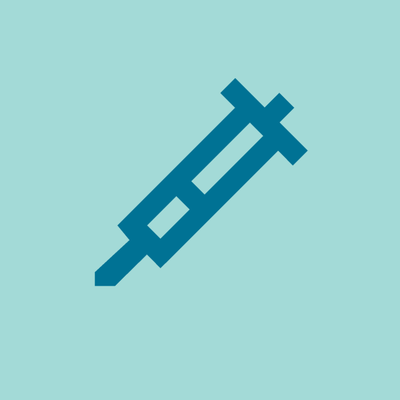Isolation for Positive COVID-19 Tests and Exposure Protocols
If you are sick, stay home!
Regardless of vaccination status, you should report your positive test and isolate from others when you have COVID-19. You should also isolate if you are sick and suspect that you have COVID-19 but do not yet have test results.
1) Report your positive test:
If you have a positive test, or are showing symptoms, you must follow these instructions:
- Use this form to self-report your case (you may also email COVIDresponse@cca.edu).
- Begin isolation, if appropriate, immediately. You can determine if you should isolate based on the protocols outlined below.
- You will be contacted by a member of our team who will collect information from you, guide you on your next-steps, and alert anyone who may need to be notified, including those who may have been exposed.
2) Begin isolation if you test positive for COVID-19:
Isolate for at least 5 days:
- Isolate from others in your home and do not leave except to get medical care. Do not visit public areas and do not go places where you are unable to wear a mask.
- Do not travel and avoid public transportation, ride-sharing, or taxis (if possible).
- Get rest and stay hydrated, and take over-the-counter medicine as necessary. Stay in touch with your medical provider and look for emergency warning signs of more serious illness.
Ending isolation:
- If you had no symptoms, you may end isolation after day 5.
- If you had mild symptoms, you may end isolation after day 5 if you are fever free for 24 hours (without the use of fever-reducing medication) and your symptoms are improving. If you still have fever or your other symptoms have not improved, continue to isolate until they improve.
Per Center for Disease Control (CDC) guidelines, after isolation, you should continue to wear a mask (including on and off campus) through day 10. If you test negative with two sequential antigen tests 48 hours apart, you may remove your mask in public places sooner than day 10.
If you had moderate illness (if you experienced shortness of breath or had difficulty breathing), or severe illness (you were hospitalized) due to COVID-19, or you have a weakened immune system, you should isolate through day 10.
After you have ended isolation, if your COVID-19 symptoms recur or worsen, restart your isolation at day 0. Talk to a healthcare provider if you have questions about your symptoms or when to end isolation.
If you were exposed to COVID-19, but have not tested positive:
If you were exposed to the virus that causes COVID-19 or have been told by a healthcare provider, public health authority, or other notification that you were exposed, here are the steps that you should take, regardless of your vaccination status or if you have had a previous infection:
- Wear a mask in all public spaces (including in housing assignments) as soon as you find out you were exposed.
- Watch for symptoms including fever, cough, shortness of breath, or other COVID-19 symptoms.
- If you develop symptoms, isolate immediately, get tested, and stay home until you know the result. If the results are positive, follow the isolation protocols above.
Get tested at least 5 full days after your last exposure, even if you don’t develop symptoms.
- If you already had COVID-19 within the past 90 days, see specific testing recommendations.
- If you test negative, continue taking precautions through day 10 (You can still develop COVID-19 up to 10 days after you have been exposed)..
- If you test positive, isolate immediately and follow the isolation protocols above.
Contact tracing: Please note that while CCA is primarily responsible for initiating the contact tracing process, the COVID Response team is not able to provide 24/7 monitoring of incoming cases over the weekend and there will be a delay in response over the weekend. Therefore, we ask that you please use your best judgement to manage COVID protocols and the safety of those around you. If you find out over the weekend that you have tested positive for COVID-19, and you have had any close contacts (defined as being in close proximity, within 6 feet, for 15 minutes or more) within the last 48 hours of your positive test, please notify them directly. The COVID Response team will promptly work with students, faculty, or staff, along with public health officials, to identify and contact individuals who may have been exposed, during the work week, and will still follow up with close contacts that you have reported. However, if you feel comfortable, your initial outreach will help enhance safety on campus.
When you have COVID-19, isolation is counted in days, as follows:
- If you had no symptoms, day 0 is the day you were tested (not the day you received your positive test result). Day 1 is the first full day following the day you were tested. If you develop symptoms within 10 days of when you were tested, the clock restarts at day 0 on the day of symptom onset.
- If you had symptoms, day 0 of isolation is the day of symptom onset, regardless of when you tested positive. Day 1 is the first full day after your symptoms started.
Close contact: Someone who was within 6 feet of an infected person for a cumulative total of 15 minutes or more over a 24-hour period (for example, three individual 5-minute exposures for a total of 15 minutes).
Symptoms of COVID-19 may include fever or chills, cough, shortness of breath or difficulty breathing, fatigue, muscle or body aches, headache, new loss of taste or smell, sore throat, congestion or runny nose, nausea or vomiting, diarrhea. This list does not include all possible symptoms.
Up-to-date on vaccination means you are either two weeks past completing the full initial course of vaccines—either both doses of a two doses vaccine or after one dose of single-dose vaccine AND one week after receiving a Booster of any type once a person is eligible for a Booster. Until a person is eligible for a Booster, they are considered Up-to-Date on Vaccination two weeks after completing their initial vaccines.


